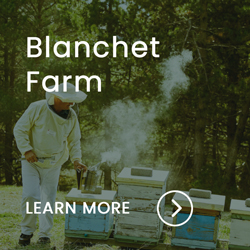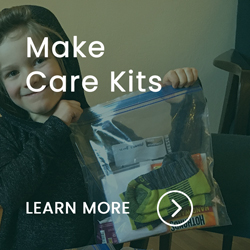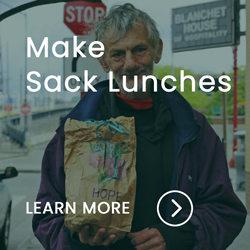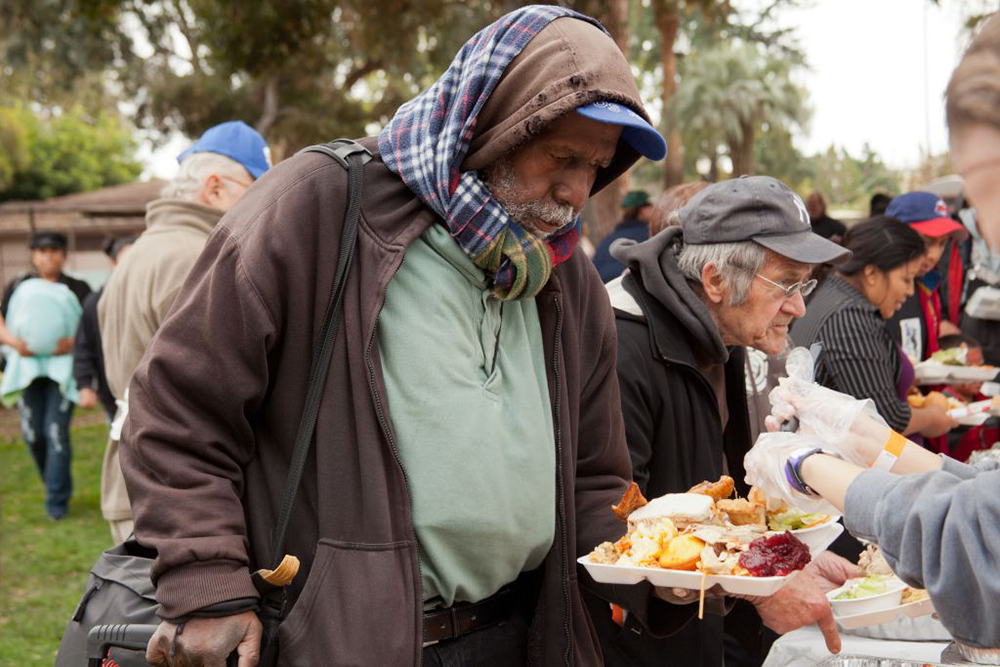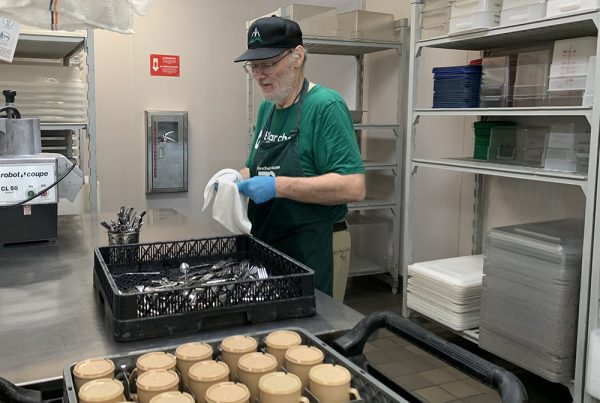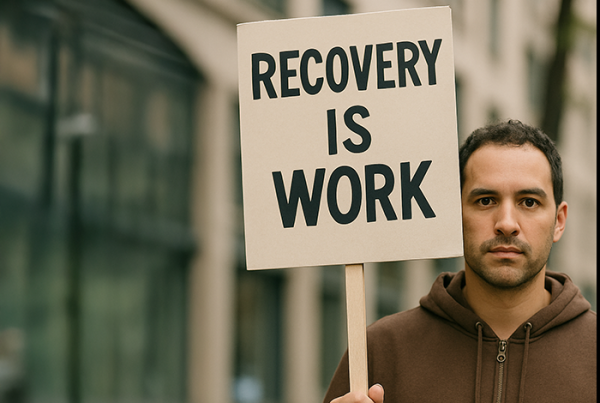What’s the best way to help feed people living homeless? During Hunger Action Month many people are compelled to offer meals to houseless people in need for the first time. To help in the best way possible it’s important to understand best practices for food safety, personal safety, and the safety of those you want to aid.
From time to time, I get calls from someone who says, “A group of us what to make and hand out meals to people who are homeless. What advice do you have?”
I’m grateful to be able to share what Blanchet House has learned after serving free meals for 70 years. I know that together we can reach more people experiencing homelessness and hunger.
I first ask the callers, “Where do you want to serve this food?”
They tell me.
Sometimes, it’s an area of town where other established aid groups are already feeding people. I let them know and suggest they contact those organizations to find out how they can support them.
There’s no benefit to duplicating efforts using precious resources and we need all the help we can get to stand against hunger.
If the caller is still interested in feeding people on their own, I ask more questions.
“How do you plan to keep the food at a proper temperature, either hot or cold?” I ask.
This sometimes is met with silence, so I explain.
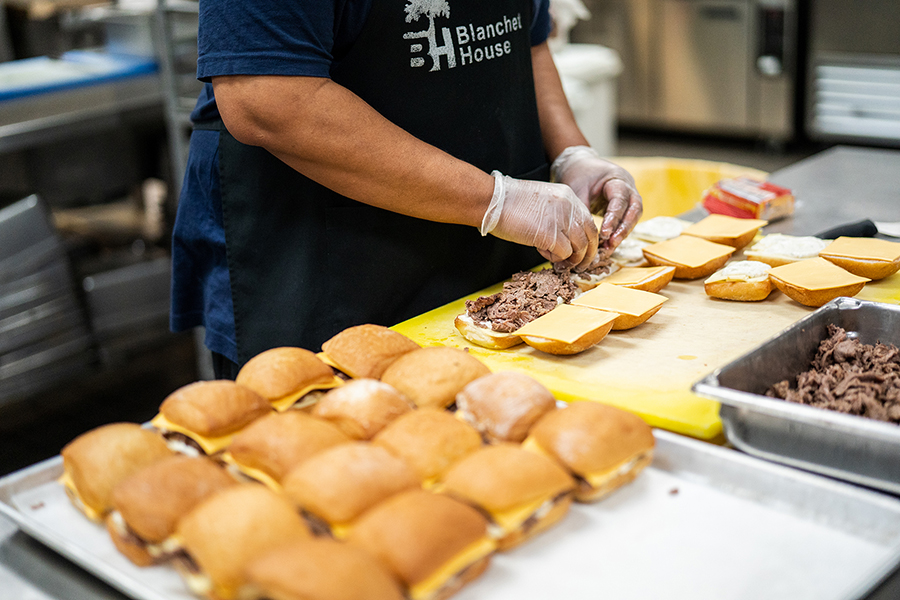
Chef making sandwiches at Blanchet House. Photo by Christine Dong.
Food Safety Restores Dignity to Houseless
Charitable meal programs like the one run by Blanchet House must follow the same food safety rules as restaurants. These regulations cover areas such as temperature safety, spoilage, expiration dates, pest activity, and potential chemical contamination.
Blanchet House’s kitchen is inspected twice a year by the Multnomah County Health Department. And because we receive food donations from the Oregon Food Bank, we must meet its standards for food safety, as well.
As for sanitation, our prep and cooking spaces must be cleaned according to state rules. As well as utensils and equipment
For these reasons, we cannot accept leftovers served from private parties or the like. Someone’s lasagna or casserole dish that was half eaten is not safe to serve to others. We’re sure it’s delicious, but we can’t guarantee it hasn’t been sitting out too long.
We cannot in “good faith” guarantee that the food meets all safety rules.
At this point in the phone call, I usually hear a tentative, “Okay.”
The wheels are turning. So, I continue.
Safety guidelines aside, it’s important to our mission that we serve food with dignity. This means that houseless diners are entitled to the same food standards that we expect for ourselves and our families. Therefore, we use only fresh, chef-inspected, unexpired food ingredients to make certain we can offer a balanced meal, with protein, vegetables, and fruit.
After all, we don’t want to make people we’re trying to help sick.
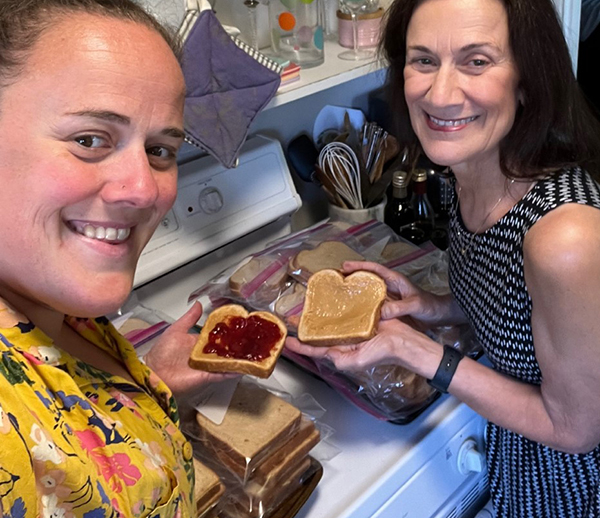
Volunteers make and donate sack lunches for distribution at Blanchet House.
Food Donor Protection: Good Samaritan Law
I then ask, “Have you heard about the Good Samaritan Law?”
There is a federal law that protects certain food donations to encourage people to waste less.
The Bill Emerson Good Samaritan Food Donation Act protects food donors from liability so long as their donations are receipted and inspected by an organization prior to their distribution.
This means that Blanchet House must inspect food before serving it and keep a record of the food received. If not, we could be liable for illnesses experienced by our guests.
Next, I ask, “Has your group talked about what it means to feed the houseless in a trauma-informed way? Have you considered how to keep your volunteers and the people you serve safe and well?”
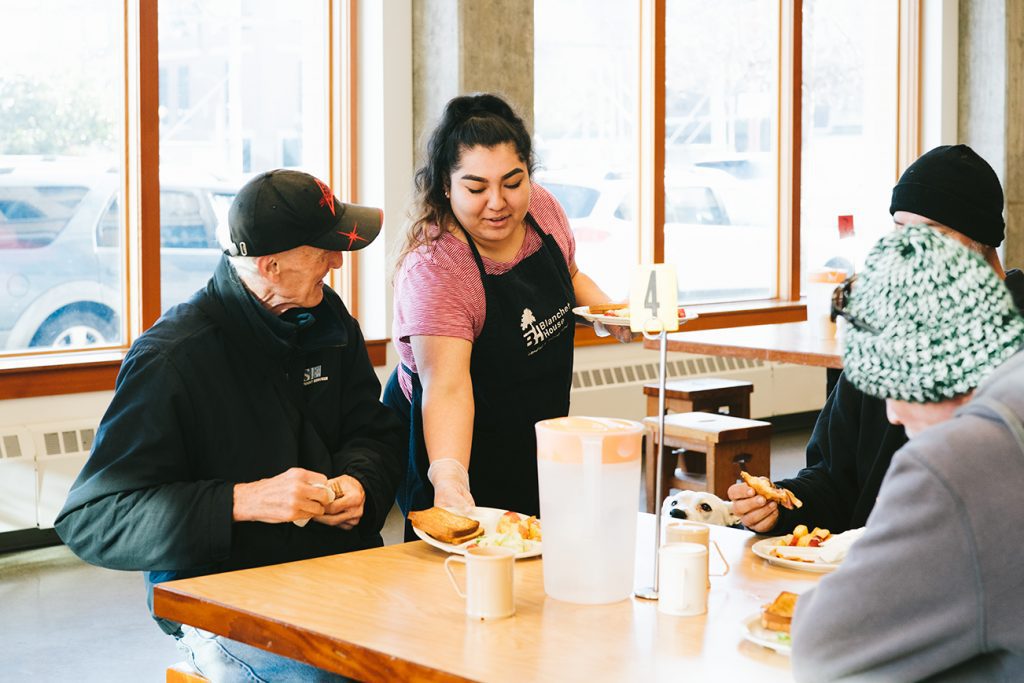
A volunteer serves meals in Blanchet House’s free cafe.
Trauma-Informed Service and Safety to Feed Houseless
Mental health and addiction crises are the biggest challenges Blanchet House faces in serving the public.
We served thousands of people during the pandemic without the wheels coming completely off the bus. We were able to meet the increased need for meals by growing cold storage capacity and investing in paid chefs. Investing in professional staff is not only important for good-tasting food but also to ensure proper food preparation and handling.
In addition, we’ve hired peer support specialists to help our guests suffering from mental health and addiction challenges. This critical staff de-escalates potentially dangerous situations from occurring and helps connect them to appropriate resources.
Our meal services staff and volunteers receive special training too.
There’s more to giving out food than simply doing it. To do it well, in a way that is trauma-informed, dignified, safe, culturally sensitive, and inclusive, takes consistency and infrastructure. People need to eat, but their experience should be safe, healthy, and dignified.
My recommendation is to follow your heart and help those in our community struggling with hunger. But the best way to help may be to engage with an organization already doing work. Together we can reach more people and alleviate hunger.
Ways you can help:
- Sign up to volunteer with or donate money to a local organization
- Search the Oregon Food Bank’s Food Finder to discover organizations working in your area.
- Get involved with Blanchet House.



